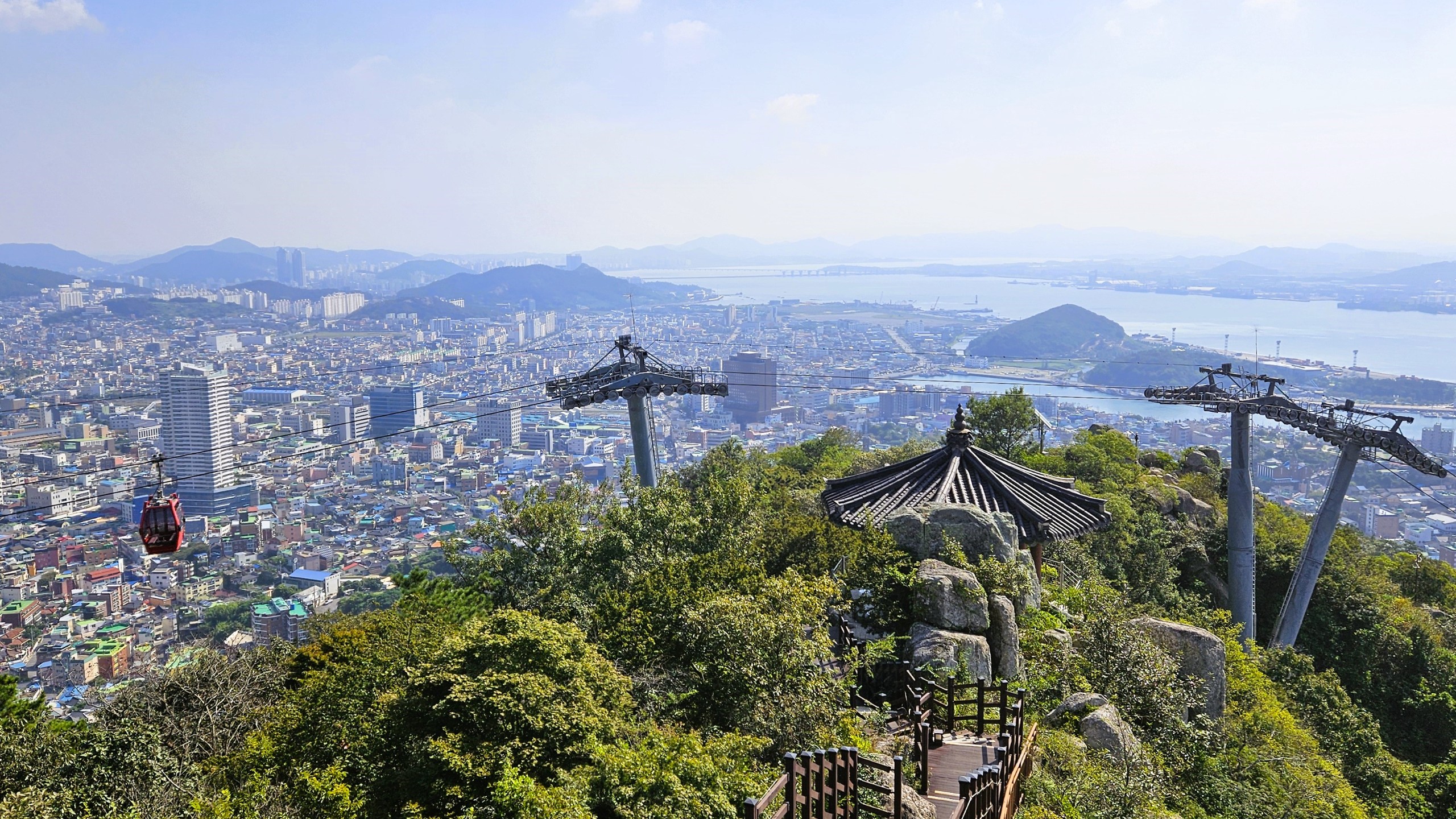
DAY 11
(Reading time: 6 minutes)
I’m fascinated by the beautiful hilly landscape of Korea. A hill here… a hill there… hills everywhere.
…perfect for morning workouts, dog walking, running practice, a post-lunch health stroll, or simply enjoying the joy of movement and views.
You might argue that we also have hills in our country where we can do the same things. Of course, you’re right, but you know how it is with the neighbor’s lawn—it’s always greener. Always. For me, the “greener” hills are over there, with our neighbors in South Korea. 😊
Yudalsan, standing 228 meters tall, holds the title of “the highest hill in Mokpo.” Perhaps that’s why the longest cable car in all of South Korea was built right next to it. Two records in one day? Count me in!
The starting point for a short hike is guarded by our old friend, Admiral Yi Sun-shin, who stayed here with his troops during the Imjin Wars in the late 16th century (when Japan attempted to invade Korea).

On the way up, you’ll encounter several traditional Korean-style pavilions, perfect for resting, snacking, or admiring the views.
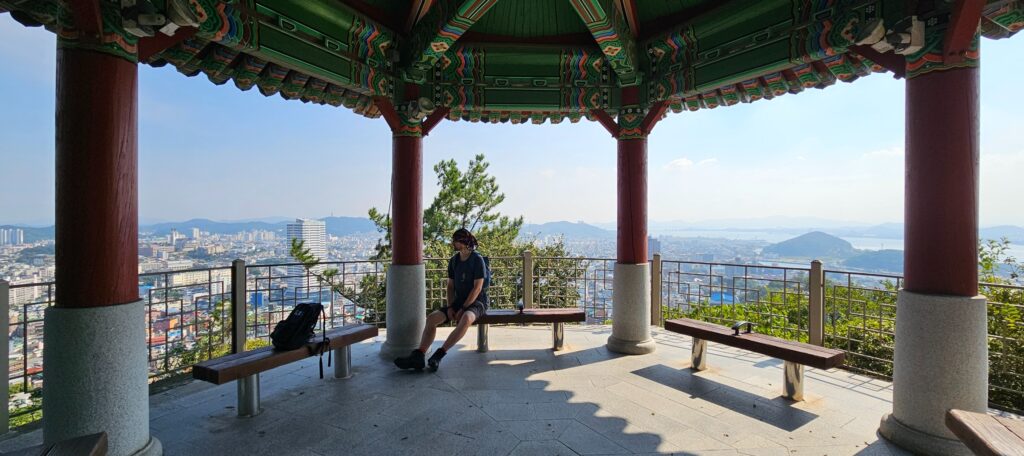
At the summit, you’re rewarded with spectacular panoramas, including the 1,004 islands of Sinan County in South Jeolla Province.
(the rock carving in the second photo depicts Acala, known in Korean as Budong Myeongwang, a Buddhist guardian)
Of course, the Koreans built their obligatory steps here as well. On the other hand, I can’t imagine who, apart from climbers with special equipment, could manage to scale this rocky massif without them.
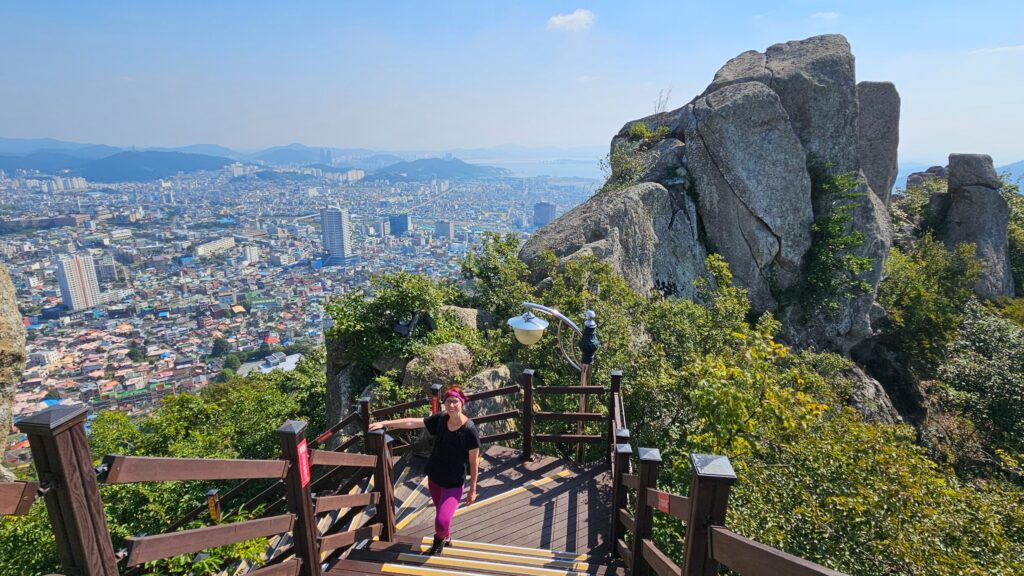
From the summit of Yudalsan, we descended about 200 meters to a cable car station, imagining an easy transfer to Gohado Island (image “A” below shows the ideal scenario). Well, we had painted the world in rosy colors once again…
Logic dictates that at a station, even if it’s not the starting one, you board and continue in the direction of travel. Here, the cabins slow down, their doors open, and sometimes people get off… but boarding a cabin headed toward Gohado? Absolutely not!
They only allow boarding the cabins returning from Gohado (see image “B”). In other words, you’re forced to:

At the upper station, the staff even handed us a piece of paper with instructions, as if we were retarded… but it was the system that was retarded, not us. 😀

It was a longer trip, but at least the ticket was more expensive.
Instead of saving a few won on what we thought would be a half-distance ride, we ended up paying even more. After all, we traveled longer than those starting at the first station—it only makes sense, right?
The cable car itself, however, is a masterpiece, and you definitely want to ride it. The round trip takes about 40 minutes, covering a distance of 3.23 km, making it the longest cable car in South Korea. The cables stretch high above hills and the sea, offering breathtaking views for many but potentially a nightmare for those with a acrophobia. For a higher fare, you can even ride in a “diamond cabin” with a glass floor.
The final station of the cable car stands on Gohado Island, which is also associated with Admiral Yi Sun-shin. However, the first notable figure you’ll see upon arrival is Vincent van Gogh. For some reason, South Koreans seem quite fond of this painter. During our trip, we came across two van Gogh-style cafés, souvenir shops selling items like aprons, T-shirts, or reusable shopping bags with his artwork, and even Snoopy has a van Gogh painting in his doghouse. 😀 And here he was again! Without any explanation, staring at us from the wall of the cable car station. It’s a real mystery.
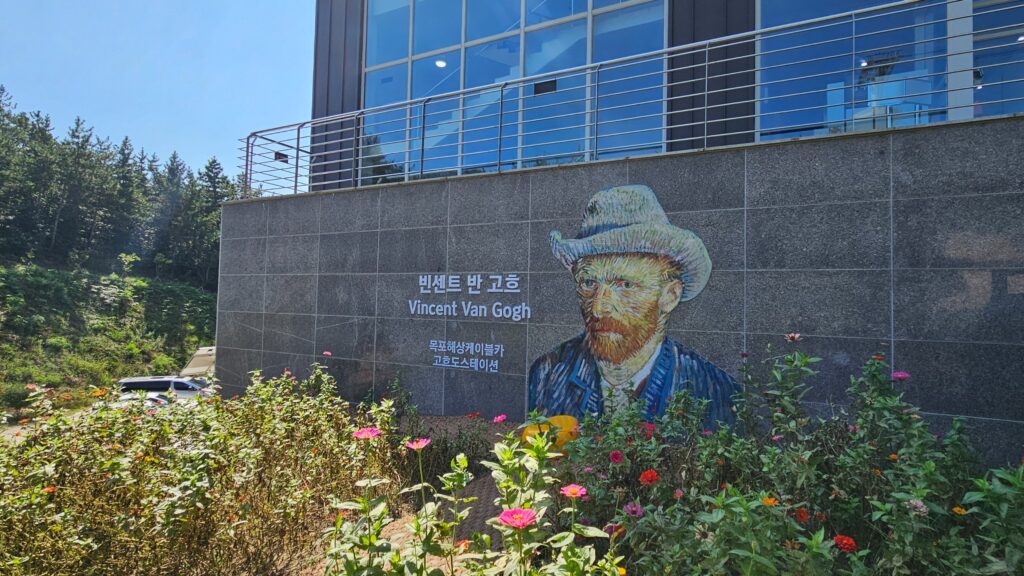
(I’m not sure if Koreans realize that van Gogh found inspiration and artistic muses in Japan…)
The island’s landmark is a bizarrely shaped observation tower resembling Admiral Yi Sun-shin’s turtle ships. In front of it are blowers typically found near beaches or temples—they’re used to blow dust off your shoes to clean them (at beaches when leaving, at temples when arriving). A practical invention; we use blowers to clear fallen leaves instead…

Admission to the observation tower is free, and inside are several floors of exhibits dedicated to tourism in the Mokpo area and drawings of Yi Sun-shin’s legendary turtle ships.
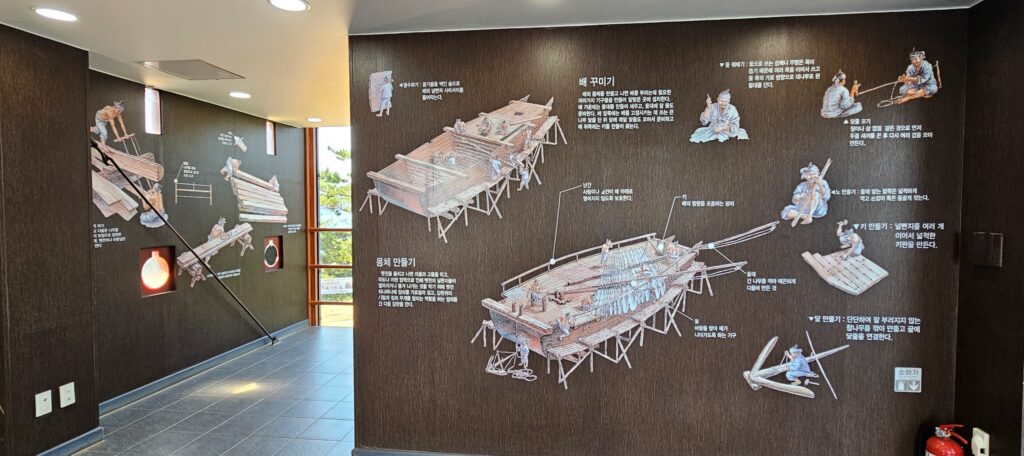
From the tower, we spotted a wooden promenade winding along the island. According to the map, it stretched just over a kilometer to its farthest point and promised an encounter with a dragon at the end! How could we resist?

Perhaps we should have. 😀
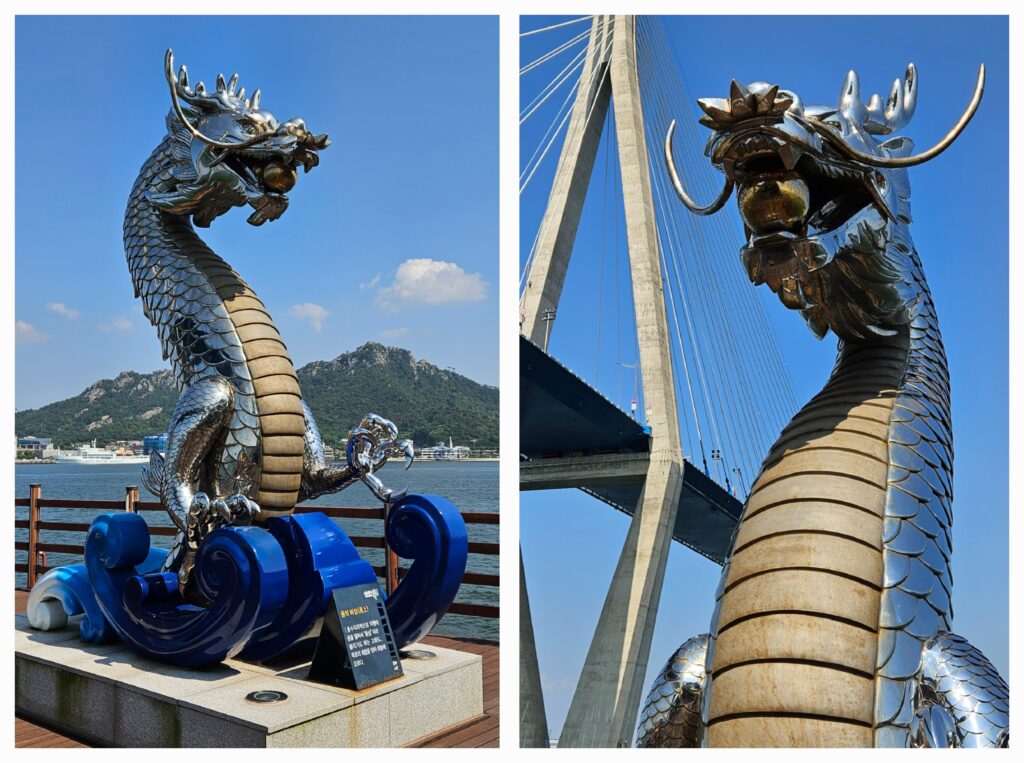
Our reward for the extra walk in the scorching sun (today was really hot) was a cheesy plastic-metal dragon creation. Well “thanks” a lot.
At least the views were okay. Along the way, we came across another statue, once again of Admiral Yi Sun-shin, and several enormous caves. These were dug out by the Japanese during World War II to hide their warships. The caves are approximately 5 meters wide, 3 meters high, and extend up to 18 meters deep.

The last stroll of the day was in the evening, around Mokpo. Motivated by the search for a good meal, we ventured deeper toward the city center. The streets were somewhat deserted but glittered like Christmas trees.
A quick Google search revealed that Mokpo not only presents itself as the 4th most tourist-friendly city but also claims the nickname “The City of Lights,” which they live up to with an abundance of streetlights, including fluorescent arches and illuminated cable car cabins. These glow in rainbow colors at night.
Mokpo has faced criticism for increasing light pollution and downplaying ecological concerns, but no one’s taking their nickname away, and the lights continue to shine.
-endy-
DONKEY´S SPECIAL:
-mj-